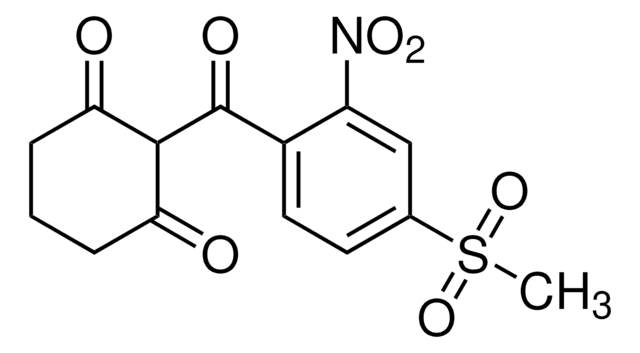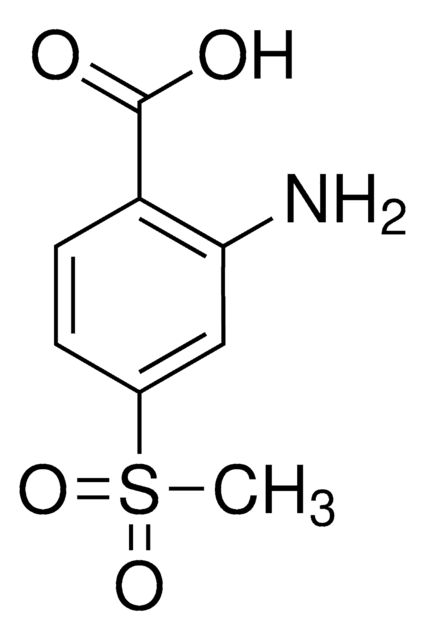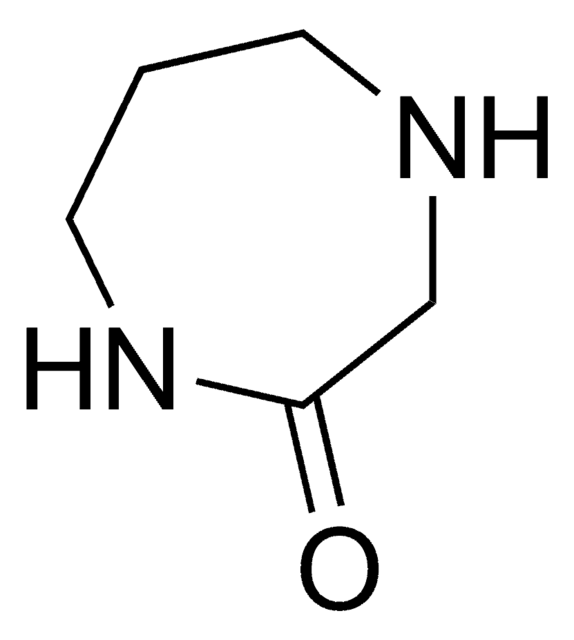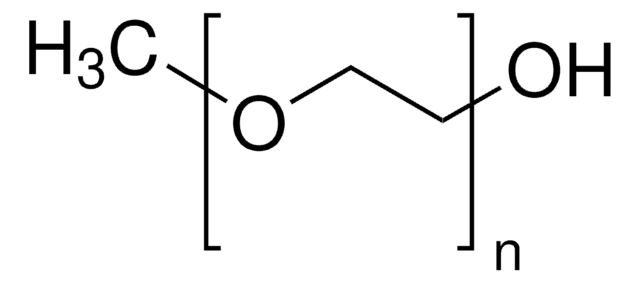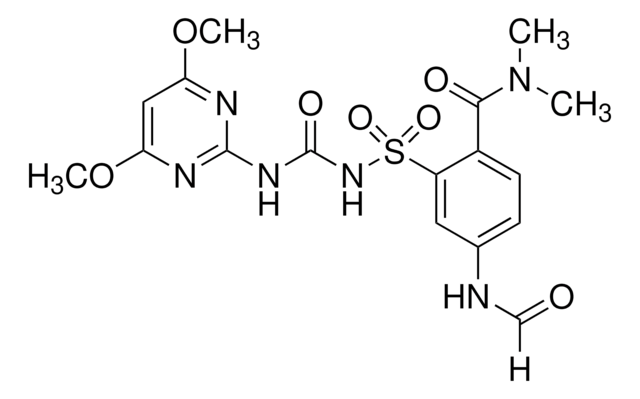Wichtige Dokumente
CRM18124
Mesotrion Metabolit AMBA
certified reference material, TraceCERT®, Manufactured by: Sigma-Aldrich Production GmbH, Switzerland
Synonym(e):
2-Amino-4-(methylsulfonyl)-benzoesäure
About This Item
Empfohlene Produkte
Qualität
certified reference material
TraceCERT®
Qualitätsniveau
Produktlinie
TraceCERT®
Haltbarkeit
limited shelf life, expiry date on the label
Hersteller/Markenname
Manufactured by: Sigma-Aldrich Production GmbH, Switzerland
Format
neat
Lagertemp.
−20°C
InChI
1S/C8H9NO4S/c1-14(12,13)5-2-3-6(8(10)11)7(9)4-5/h2-4H,9H2,1H3,(H,10,11)
InChIKey
KFOGGDGNOLZBNY-UHFFFAOYSA-N
Suchen Sie nach ähnlichen Produkten? Aufrufen Leitfaden zum Produktvergleich
Allgemeine Beschreibung
Certified content by quantitative NMR incl. uncertainty and expiry date are given on the certificate.
Download your certificate at: http://www.sigma-aldrich.com
AMBA (2-amino-4-methylsulfonylbenzoic acid) is one of the metabolites formed from biodegradation of parent Mesotrione. Mesotrione is a selective herbicide that belongs to the triketone family, developed for use in maize culture as a substitute for atrazine. It is used for pre- and post-emergence control of common broad-leaved weeds, primarily in corn (maize). It acts by inhibiting the p-hydroxyphenylpyruvate dioxygenase (HPPD) enzyme, thus, blocking the production of carotenoid pigments in susceptible plants.
Mesotrion is currently approved for its use in the European Union. Maximum residue levels (MRLs) have been set according to Reg (EU) 2017/626 for mesotrione for various products of plant and animal origin from 0.01 to 0.05 mg/kg. Compared to the parent compound, AMBA metabolite is more persistent in soil and possess greater toxicity in selected microorganisms.
Anwendung
- Study the biodegradation and toxicity of herbicide mixtures mesotrione, nicosulfuron, and S-metolachlor by a bacterial strain, Bacillus sp. Mes11
- Isolation and characterization of a Bacillus sp. from cloud water for rapid biotransformation of mesotrione herbicide
- Investigation of mesotrione biodegradation products by the bacterial strain Bacillus sp. 3B6 using liquid chromatography/electrospray ionization quadrupole time-of-flight mass spectrometry (LC/ESI-QTOF-MS)
- Qualitative and quantitative metabolic profiling of mesotrione, by the bacterial strain Bacillus sp. 3B6 using NMR, LC-NMR, and LC-MS
- Method development for the determination of the mesotrione and its two metabolites, MNBA and AMBA in rice, rice plants, rice hulls, water, and soil using UPLC and triple-quadrupole tandem mass spectrometry
Empfohlene Produkte
Rechtliche Hinweise
Sie haben nicht das passende Produkt gefunden?
Probieren Sie unser Produkt-Auswahlhilfe. aus.
Signalwort
Warning
Gefahreneinstufungen
Acute Tox. 4 Dermal - Acute Tox. 4 Inhalation - Acute Tox. 4 Oral - Aquatic Chronic 3 - Eye Irrit. 2 - Skin Irrit. 2 - STOT SE 3
Zielorgane
Respiratory system
Lagerklassenschlüssel
11 - Combustible Solids
WGK
WGK 3
Flammpunkt (°F)
Not applicable
Flammpunkt (°C)
Not applicable
Hier finden Sie alle aktuellen Versionen:
Analysenzertifikate (COA)
Die passende Version wird nicht angezeigt?
Wenn Sie eine bestimmte Version benötigen, können Sie anhand der Lot- oder Chargennummer nach einem spezifischen Zertifikat suchen.
Besitzen Sie dieses Produkt bereits?
In der Dokumentenbibliothek finden Sie die Dokumentation zu den Produkten, die Sie kürzlich erworben haben.
Unser Team von Wissenschaftlern verfügt über Erfahrung in allen Forschungsbereichen einschließlich Life Science, Materialwissenschaften, chemischer Synthese, Chromatographie, Analytik und vielen mehr..
Setzen Sie sich mit dem technischen Dienst in Verbindung.